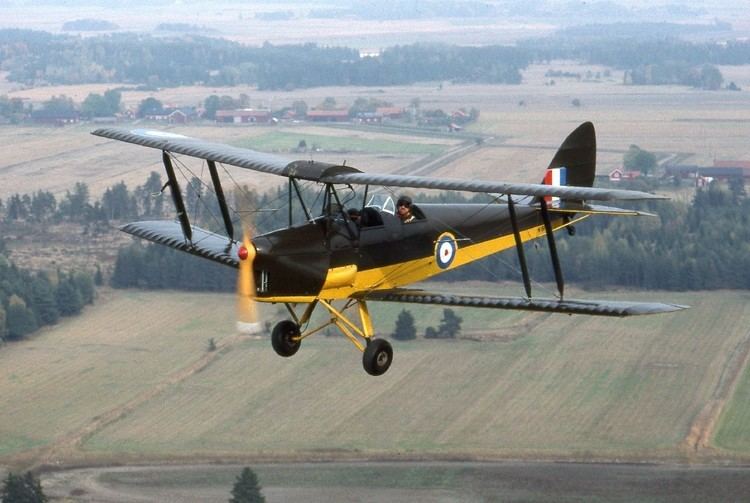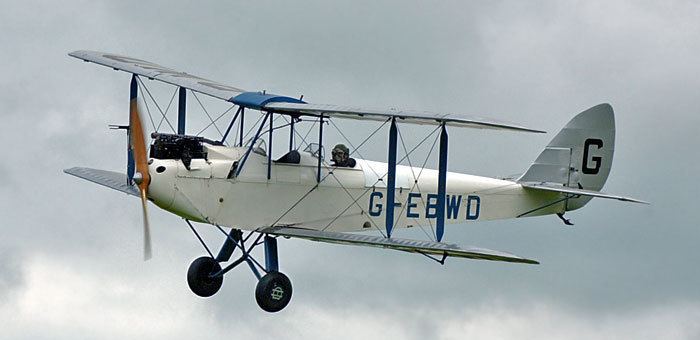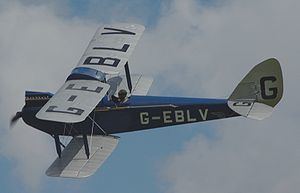Length 7.29 m | ||
De havilland moth
The de Havilland Moths were a series of light aircraft, sports planes and military trainers designed by Geoffrey de Havilland. In the late 1920s and 1930s they were the most common civil aircraft flying in Britain and during that time every light aircraft flying in the UK was commonly referred to as a 'Moth', regardless if it was de Havilland-built or not.
The first Moth was the DH.60: a straight-winged biplane two-seater. To enable storing the plane in small spaces, the DH.60's wings could fold backwards against the fuselage. "Like a moth" remarked Geoffrey de Havilland, an avid lepidopterist, and so the plane was nicknamed Moth from the drawing board on.

The 'Moth' was one of the first practical light aircraft designs to be intended for civilian training and recreational use, rather than for military buyers. The Moth was also one of the first light aircraft to be mass-produced and was available to a much wider section of the general public than previous aircraft designs.

First variations of the name began with changes in the engine used for the DH.60: Variants with a Cirrus Hermes, Armstrong Siddeley Genet and de Havilland Gipsy engine became Hermes Moth, Genet Moth and Gipsy Moth respectively. (The original ADC Cirrus-powered DH.60 retroactively became the Cirrus Moth.) As the DH.60 became more and more popular, de Havilland decided to cash in on the fame of the original by giving each of his new designs a name ending with Moth.

First of them was the DH.61: a giant five-passenger biplane aptly called Giant Moth. Other Moths include the Leopard Moth and Hornet Moth cabin biplanes, the Puss Moth cabin monoplane and the Moth Minor low-wing two-seater. The most famous of the moths however, for sheer numbers built (nearly 9000), is the DH.82 Tiger Moth: a biplane trainer used during World War II in Britain and the Commonwealth of Nations and the aircraft on which all World War II RAF pilots learned to fly.
A more detailed list of the various de Havilland aircraft using the name Moth is given below:
The prototype of the DH.84 Dragon light passenger plane was originally called Dragon Moth, but later the 'moth' in its name was dropped as the plane was a civil airliner and the name 'moth' was to be used for sportsplanes only.

